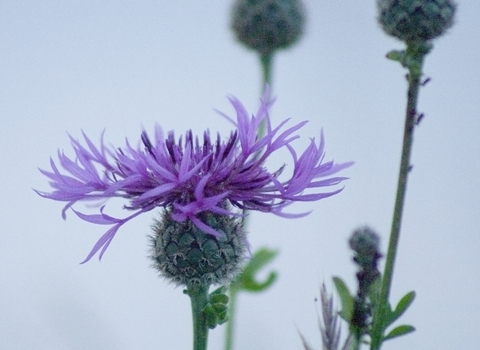
©Dominic Alves
Greater knapweed
The ragged-edged, purple flower heads of Greater knapweed bloom on sunny chalk grasslands and clifftops, and along woodland rides. They attract clouds of butterflies.
Scientific name
Centaurea scabiosaWhen to see
June to SeptemberSpecies information
Category
Statistics
Height: up to 1mCommon.
